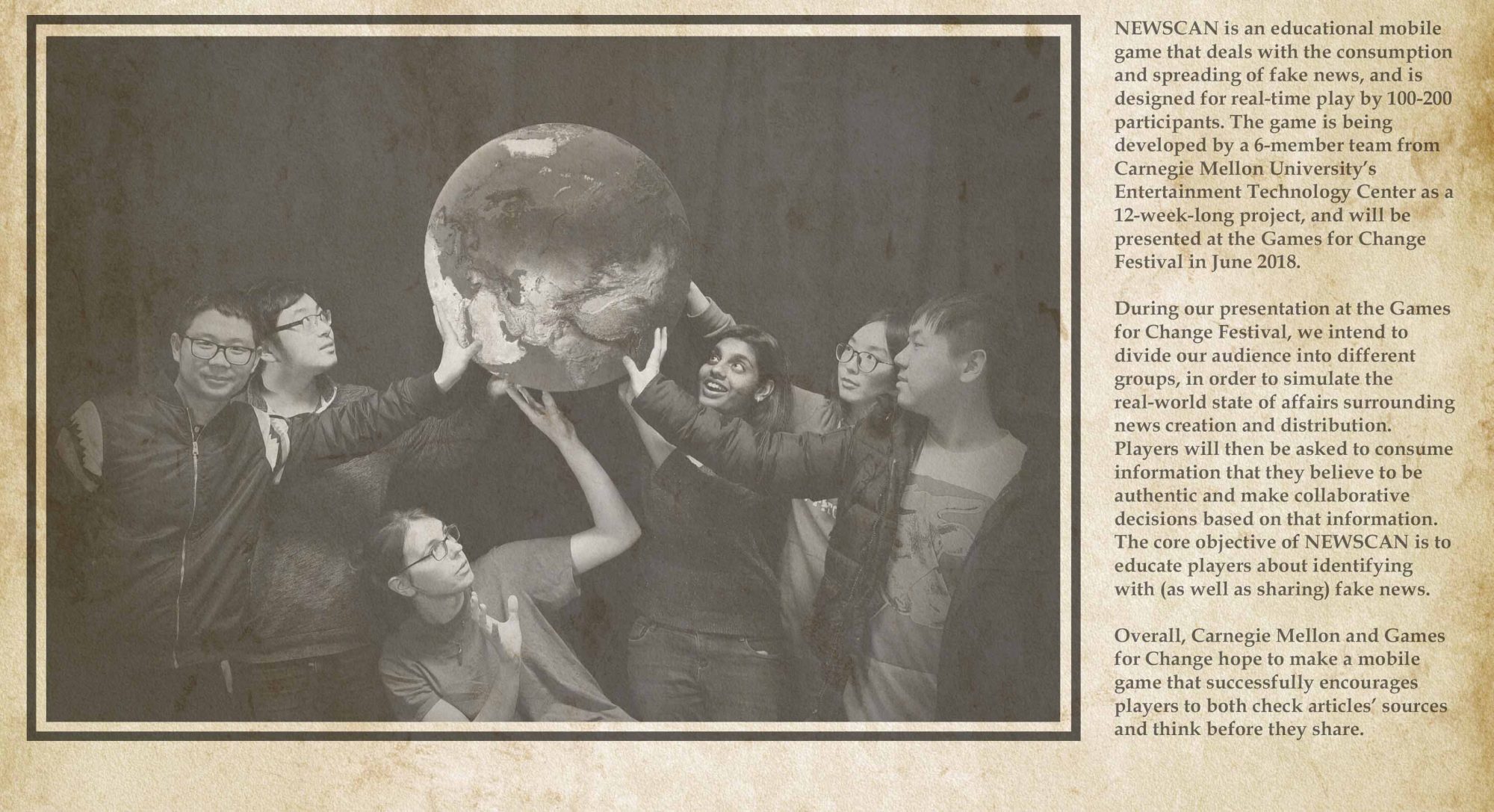Our first day of our soft opening went fairly well. While ETC faculty did have comments concerning very specific parts of our game (e.g. that we should clarify visuals on the large screen portion of our game, and that we could consider categorizing selectable content), the most major comment that we got across multiple faculty visits was on our use of Donald Trump as a character in our game’s final phase. In particular, faculty wondered why we needed to include Trump in our game, which we answered by citing the topical nature of his link with disinformation as distraction. Those comments aside, we got positive feedback concerning the goal of our game: several faculty said that they quickly picked up on one of our experience’s core points (i.e. that fake news spreads easily due to negativity and emotional appeals). What’s more, faculty genuinely enjoyed the content that they used to create in-game posts
The second day of softs went much differently. Some faculty were completely lost on what the context of our game was, text displayed on players’ phones was too small to read, and faculty were disappointed that they didn’t get any feedback concerning the success of their posts aside from number of newly acquired followers and follower count. What’s more, some faculty were overwhelmed by the sheer amount of text that they needed to read through, and suggested paring down options for topics to post on. Once all was said and done, we had our work cut out for us. While the first part of our game was clear (for the most part) to faculty in terms of the goal it wanted to accomplish, the whole “distract the president” section didn’t really land.
The next day, we had a lengthy section with Dave Culyba concerning where we should go with our project next. The vast majority of his feedback centered on our game’s final phase:
- We needed to get away from the whole “president about to launch nuclear weapons by pressing a button” scenario, as this was (ironically) distracting from how the process of disinformation-related distraction works in the real world (i.e. one story is used to distract people’s attention from another story, not a desire to initiate war).
- We really needed to focus effort on our ending presentation. It was too late to give our guests in-game feedback concerning why exactly each of their posts attracted certain amounts of followers, so we needed to make sure to provide a thorough explanation of that mechanic after the game was over.
- Our game’s current content proved to be distracting in and of itself: the fact that players needed to read through so much text to understand what they were supposed to do detracted from the overall experience.
- Finally, we needed to fully accept that we weren’t just making a game: we were making a show, and we needed to be aware of that when figuring out the flow of the entire experience.
Following our meeting with Dave, we got right to work. Instead of having players distract the president from launching nuclear missiles, we shifted our game’s final phase to a scenario in which players send out posts (with the help of their new follower army, keeping followers as the player’s main tool) to distract from a story that the character behind our game’s fake social media site “Woofer” finds unfavorable (as “Woofer” turns out to be a troll factory in disguise). This change afforded us a more solid “disinformation as distraction” metaphor, and even addressed the constant question of “do you really need Trump in your game?” We also began work on the ending presentation of our game, and began to make additional changes to content. Going into next week, we hope to have a complete experience that we will be able to throughly test with members of our target audience on Monday.

